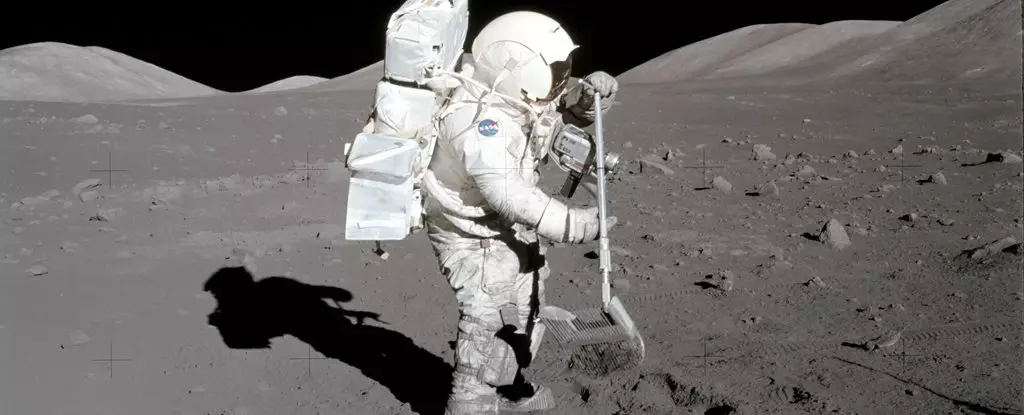The quest to explore and colonize the Moon has long been a fascination for scientists and space enthusiasts alike. While the Moon may seem desolate and barren, recent research by the US Naval Research Laboratory (NRL) suggests that there may be a potential source of water on the lunar surface. This discovery has far-reaching implications for future lunar exploration and the establishment of permanent lunar bases.
Water is a vital resource for any long-duration space mission. According to the US National Academies of Sciences, Engineering, and Medicine, the recommended daily water intake for men is 3.7 litres and for women is 2.7 litres. Carrying this amount of water for a 3-week trip to the Moon would require approximately 189 litres, weighing about 189 kilograms. The logistical challenges of transporting such a significant amount of water make longer trips into space with more crew members impractical.
During the Apollo program, a total of 382 kilograms of lunar rock was brought back to Earth. These samples provided scientists with valuable insights into the Moon’s composition. Some of the samples were immediately studied, while others were sealed for future research in the hopes that future instrumentation would be more sensitive. The NRL research team, led by Katherine D. Burgess, recently announced their findings while studying some of the lunar rock. Their objective was to understand the source and formation of water on the Moon, as future lunar exploration and permanent lunar bases will heavily rely on existing lunar resources.
The NRL research team utilized transmission electron microscopy to study lunar sample 79221. This technique involves using a particle beam of electrons to visualize specimens and generate highly magnified images. The team focused on grains of the minerals apatite and merrillite and made an intriguing discovery. They found hydrogen signatures in vesicles, which are small holes left behind after lava cools. These hydrogen signatures indicate that solar wind is being trapped in detectable quantities within the lunar rocks.
The solar wind, a stream of charged particles rushing outward from the Sun at speeds of up to 1.6 million km per hour, plays a crucial role in the potential presence of water on the Moon. The research suggests that chemical interactions between the solar wind and lunar rocks may be responsible for the formation of lunar water. This discovery could finally resolve the mystery surrounding the origins of lunar water.
The potential reservoir of lunar water trapped within the lunar rocks presents countless opportunities for future lunar exploration. Hydrogen, a fundamental component of water, is a tremendously useful resource. If scientists can successfully mine hydrogen from the lunar surface, it can significantly aid various aspects of space exploration. Furthermore, understanding the origins of lunar water opens the door to more effective utilization of this resource, propelling humanity further into the Solar System.
The discovery of hydrogen signatures in lunar rocks by the NRL research team marks a significant breakthrough in the field of lunar exploration. This finding sheds light on the potential source of water on the Moon and highlights the importance of studying and utilizing lunar resources for future space missions. As scientists continue to unravel the mysteries of the Moon, the possibility of establishing permanent lunar bases becomes increasingly feasible. The pursuit of lunar water represents a new frontier in space exploration, bringing humanity one step closer to reaching out further into the Solar System.



Leave a Reply